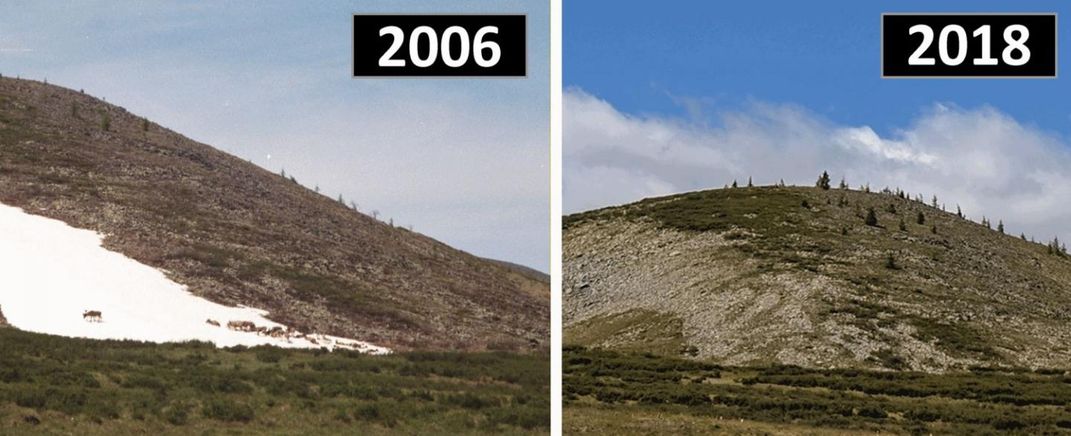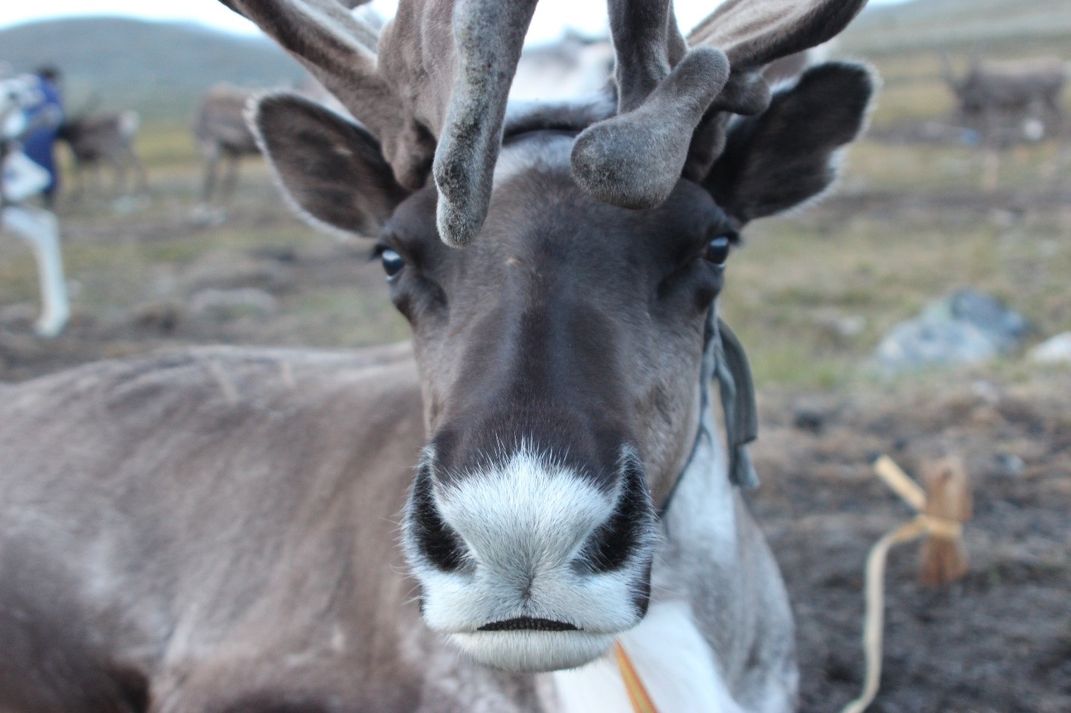Archaeologists Race to Preserve Artifacts as the Ice Melts in Mongolia
Disappearing patches of ice unleash new artifacts for discovery, but many could quickly degrade exposed to the elements
/https://tf-cmsv2-smithsonianmag-media.s3.amazonaws.com/filer/ee/d8/eed8be98-7c99-47f5-a0c9-aa61e3c70771/216981.jpg)
Ice melt due to climate change is a blessing and a curse for archaeologists. Retreating ice and snow can reveal amazingly preserved textiles, hides, wooden tools and even mummies that have been hidden for hundreds or thousands of years. But once these treasures are exposed, the clock starts ticking for their survival. Out of the natural freezer, ancient and prehistoric objects could quickly decompose due to exposure to the elements or get picked up by passing hikers or tourists.
Archaeologists in glacial regions around the world are racing to document pieces of history that they fear could disappear for good. High-altitude regions of Mongolia, where ice patches are melting at an alarming rate, are in urgent need of study, according to a new report published today in the journal PLOS ONE.
The first surveys of declining snow and ice patches in Mongolia have turned up arrowheads, animal carcasses, pieces of rope, wooden tools and artifacts that could shed light on the origins of reindeer domestication.
"We were absolutely shocked at the extent of the melting," says archaeologist William Taylor, a researcher with the Max Planck Institute for the Science of Human History and lead author of the new study.

In 2018, Taylor and his colleagues launched a survey across a rugged tundra valley known as Mengebulag in northern Mongolia, in the Khuvsgul province near the Russian border. By speaking with the local Tsaatan people, Taylor and his colleagues learned that recent melting has exceeded levels seen in at least 50 years. Many patches that had never melted in the group's collective memory were lost beginning in 2016.
During the peak of summer ice melt in July and August 2018, Taylor and his colleagues visited 11 ice patches identified through satellite imagery as well as two ice-free patches that residents said had only recently vanished. Herders have been using these ice patches to let their reindeers rest and cool off for centuries. Traveling by horseback and on foot, the researchers hoped they might find artifacts related to pre-modern reindeer herding, a practice that has murky origins in Mongolia.
Taylor and his colleagues found a few wooden artifacts, including a willow fishing pole. Radiocarbon dates showed that these objects were likely dropped in the ice sometime in the 1960s and 1970s. Though the artifacts weren't ancient, they do indicate that melting is reaching extents that haven't been seen since the middle of the 20th century.
In the summer of 2019, the team moved their survey west, to higher-altitude patches in the Altai Mountains where they hoped they might be able to get ahead of the ice loss. The results of that survey have yet to be published, but Taylor says as soon as the researchers started looking, they found dozens of arrows, projectiles, pieces of rope, wooden sticks and even animal carcasses, mostly related to sheep and goat herding as well as big game hunting. "We had more than we knew what to do with," he says. The researchers are still waiting for results from scientific dating, but stylistically, some of the artifacts appear to be at least 3,000 years old. They plan to expand their survey in the Altai Mountains next summer.
The archaeologists' perception of ice loss from their surveys on the ground matches trends scientists have been observing with satellites. Caleb Pan, a researcher at the University of Montana who has used remote sensing to monitor environmental changes in the region, says that glaciers and year-round snow in Mongolia and adjacent parts of Russian have been receding faster than ice in the rest of the globe.
"Even though quantitative analysis of northern Mongolia’s snow and ice is very limited, we have a pretty strong understanding of snow and ice dynamics in western Mongolia’s Altai Mountains," says Pan, who was not involved in the study. "Since 1990, persistent snow and glaciers have decreased by about 35 percent, as of 2016."

Large swathes of Central Asia remain unexplored by archaeologists. Losing artifacts to rapid melting could mean losing untold pieces of history related to everything from the initial dispersal of humans all the way through the origins of the Silk Road and the empire of Genghis Khan, Taylor says.
"This is an issue that characterizes not only the high mountains of Mongolia but the entire continent," he says. "It's a little overwhelming when you think about the scope of the issue and what the ice melt may mean. On one hand it's an opportunity for us to understand the past, if we can seize it. If we do nothing, it's a loss for an entire region's prehistory."
Lars Pilø, co-director of the Glacier Archaeology Program in Norway, called the surveys in Mongolia "an important first step."
"These are archaeological sites in remote areas that will be lost if archaeologists are not there to save the artifacts when they melt out," says Pilø, who wasn't involved in the research. "There is a huge potential for glacial archaeology in Asia, not only in Mongolia but also in other mountainous regions, such as the Himalayas."
The melting has severe implications for the living, too. Mongolians rely on the snow and ice for drinking water. And as reindeer also depend on snow and ice for relief from heat and insects, the livelihood of Tsaatan herders in northern Mongolia is threatened. "As the climate warms, the little niche that reindeer herding occupies is shrinking in Mongolia," Taylor says. In the past, herders could respond to a habitat change by relocating. But the herders in this part of northern Mongolia can't move their animals to higher latitudes because they're hemmed in by a hard border with Russia to the north.
"We're seeing consequences both for this really significant and important way of life, and the archaeological record that may tell us about how it came about," Taylor says.